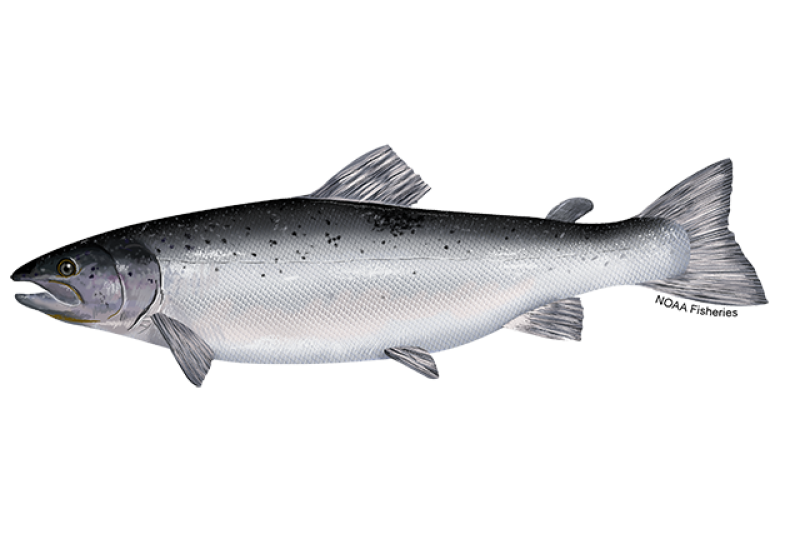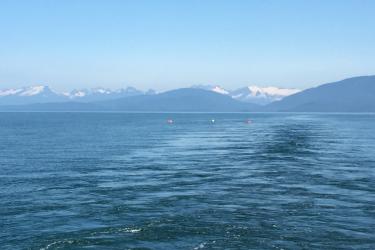Chum Salmon (Protected)
Oncorhynchus keta

Protected Status
Hood Canal summer-run ESU
Quick Facts
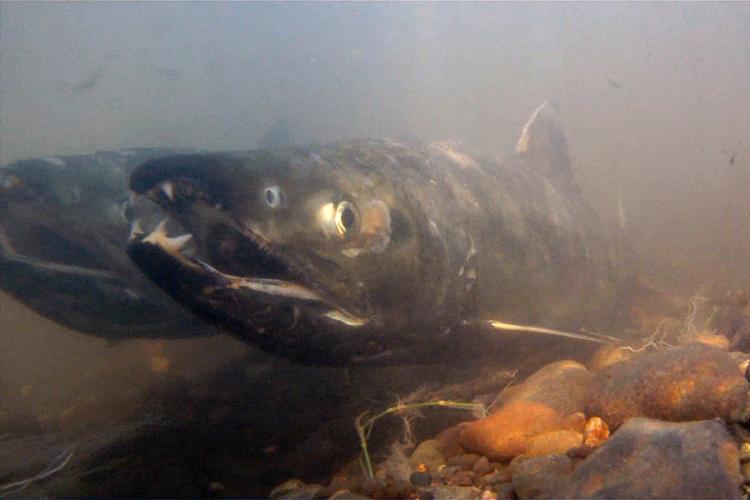 Chum salmon. Credit: NOAA Fisheries
Chum salmon. Credit: NOAA Fisheries
Chum salmon. Credit: NOAA Fisheries
About the Species
 Chum salmon. Credit: NOAA Fisheries
Chum salmon. Credit: NOAA Fisheries
Chum salmon. Credit: NOAA Fisheries
Chum salmon may historically have been the most abundant of all Pacific salmonids. They are an anadromous fish, which means they can live in both fresh and saltwater. Chum salmon have a relatively complex life history that includes spawning and juvenile rearing in rivers followed by migrating to saltwater to feed, grow, and mature before returning to freshwater to spawn. They are vulnerable to many stressors and threats including blocked access to spawning grounds and habitat degradation caused by dams and culverts. Two evolutionary significant units of chum salmon are listed as threatened under the Endangered Species Act.
NOAA Fisheries is committed to conserving and protecting chum salmon. Our scientists and partners use a variety of innovative techniques to study, learn more about, and protect this species.
Scientific Classification
| Kingdom | Animalia | Phylum | Chordata | Class | Osteichthyes | Order | Salmoniformes | Family | Salmonidae | Genus | Oncorhynchus | Species | keta |
|---|
Last updated by NOAA Fisheries on 12/22/2023
Featured News
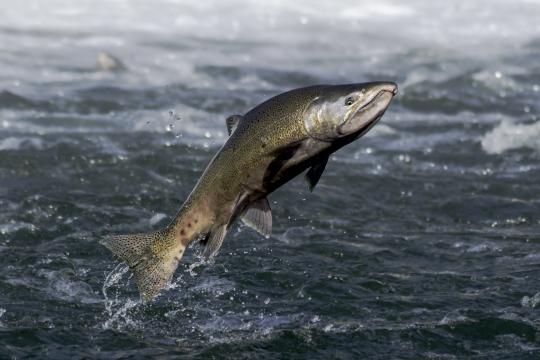 A Chinook salmon jumping out of the water. Credit: iStock
A Chinook salmon jumping out of the water. Credit: iStock
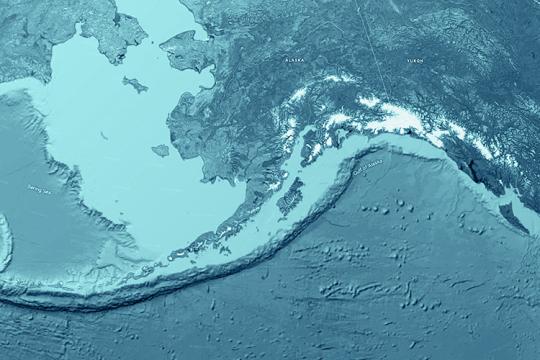 3D render and imaging of topographic map of Alaska showing the Gulf of Alaska, Aleutian Islands and Bering Sea. Satellite images courtesy of NASA. Credit: Frank Ramspott
3D render and imaging of topographic map of Alaska showing the Gulf of Alaska, Aleutian Islands and Bering Sea. Satellite images courtesy of NASA. Credit: Frank Ramspott
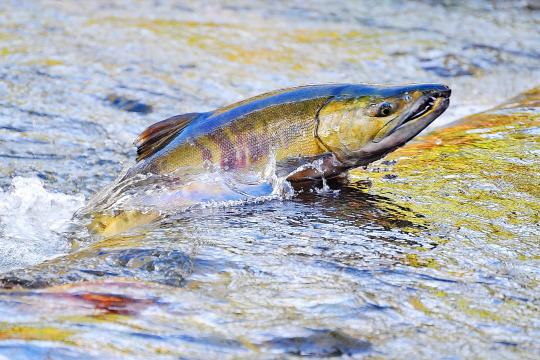 Chum salmon swimming upstream to spawn in Washington. Credit: iStock
Chum salmon swimming upstream to spawn in Washington. Credit: iStock
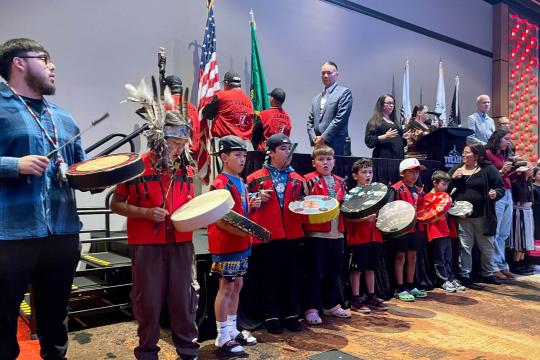 Tulalip tribal youth singers and dancers kicked off the celebration of new federal funding for tribal fish hatcheries.
Tulalip tribal youth singers and dancers kicked off the celebration of new federal funding for tribal fish hatcheries.
Federal and Tribal Leaders Celebrate $240 Million for Tribal Hatchery Modernization
Management Overview
We listed the Columbia River and Hood Canal summer-run ESUs as threatened under the Endangered Species Act in 1999.
Key Actions and Documents
Last updated by NOAA Fisheries on 12/22/2023
Science Overview

NOAA Fisheries conducts various research activities on the biology, behavior, and ecology of chum salmon. The results of this research are used to inform management decisions for this species.
Dive Deeper Into Our Research
Chum Salmon in Alaska
Our work to forecast salmon harvests, assess the impact of commercial fisheries on salmon, and evaluate how salmon populations respond to environmental changes enable us to estimate abundance and trends for chum salmon in Alaska.
Chum Salmon Research in the Pacific Northwest
Our research on Pacific salmon covers several topics including bycatch, salmon harvest forecasts, ecotoxicology, genetics, marine survival and responses to climate change.
Recent Science Blogs
Last updated by NOAA Fisheries on 12/22/2023
Documents
Cook Inlet Small Entity Compliance Guide
The Small Entity Compliance Guide (select "View Document" below) contains a summary of regulations…
Alaska Salmon Task Force Meeting Minutes January 25, 2024
Alaska Salmon Task Force Meeting Minutes for January 25, 2024.
Alaska Salmon Task Force Meeting Minutes November 14, 2023
Alaska Salmon Task Force Meeting Minutes for November 14, 2023.
Alaska Salmon Task Force Meeting Minutes September 19, 2023
Alaska Salmon Task Force Meeting Minutes for September 19, 2023.
Data & Maps
2021 Genetic Stock Composition Analysis of Chum Salmon From the Prohibited Species Catch of the Bering Sea Walleye Pollock Trawl Fishery and Gulf of Alaska Groundfish Fisheries
Alaska Fisheries Science Center Salmon Bycatch Report
2020 Genetic Stock Composition Analysis of Chum Salmon From the Prohibited Species Catch of the Bering Sea Walleye Pollock Trawl Fishery and Gulf of Alaska Groundfish Fisheries
Alaska Fisheries Science Center Salmon Bycatch Report
Research
NOAA Live! Alaska Season 5: 2024-25
NOAA Live! Alaska is a series of webinars that connects NOAA scientists and partners with students, teachers, and Alaska communities. In 2024-25, we are featuring NOAA programs and partners in Alaska communities.
GoToWebinar Registration and Joining Instructions
How to register and join meetings for the Alaska Salmon Research Task Force
Outreach & Education
Oral History of Chum Salmon: The Tails of The Legendary Kuskokwim Salmon
Presentation poster
Alaska Salmon Research Task Force Report
Report from the Alaska Salmon Research Task Force
Alaska Salmon Research Task Force Meeting Agenda—March 27, 2024
Alaska Salmon Research Task Force Meeting Agenda for March 27, 2024
¡Cuento con usted! edición salmón (en español)
Aprenda a administrar el salmón responsablemente.
Last updated by NOAA Fisheries on 12/22/2023
